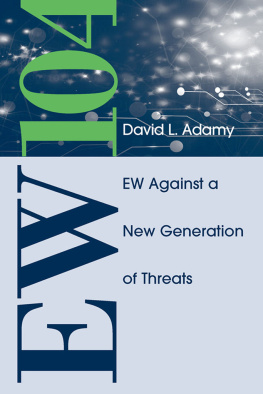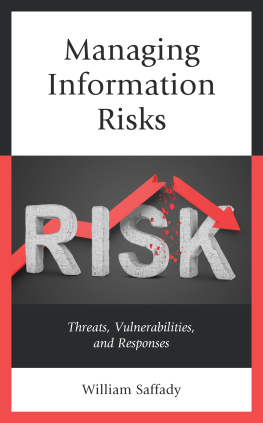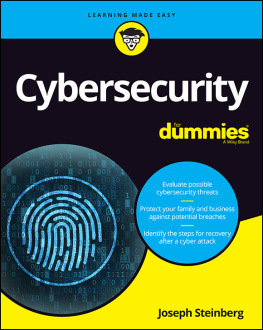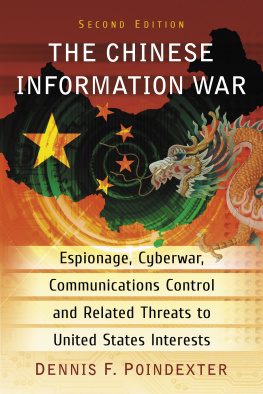EW 104
EW Against a New Generation of Threats
For a complete listing of titles in the
Artech House Power Electronic Warfare Library,
turn to the back of this book.
EW 104
EW Against a New Generation of Threats
David L. Adamy

Library of Congress Cataloging-in-Publication Data
A catalog record for this book is available from the U.S. Library of Congress.
British Library Cataloguing in Publication Data
A catalogue record for this book is available from the British Library.
Cover design by John Gomes
ISBN 13: 978-1-60807-869-1
2015 ARTECH HOUSE
685 Canton Street
Norwood, MA 02062
All rights reserved. Printed and bound in the United States of America. No part of this book may be reproduced or utilized in any form or by any means, electronic or mechanical, including photocopying, recording, or by any information storage and retrieval system, without permission in writing from the publisher.
All terms mentioned in this book that are known to be trademarks or service marks have been appropriately capitalized. Artech House cannot attest to the accuracy of this information. Use of a term in this book should not be regarded as affecting the validity of any trademark or service mark.
10 9 8 7 6 5 4 3 2 1
This book is dedicated to the young people in uniform who go into harms way to practice the art and science of electronic warfare. They are the ones who will face the danger from this new generation of threats and do what is necessary to protect the rest of us in this dangerous world.
Contents
Preface
This is the fourth book in the EW 101 series. It is based on the EW 101 columns in The Journal of Electronic Defense. At the time of this writing, the series included 213 columns written over two decades. The first two books, EW 101 and EW 102, covered the basics of electronic warfare (EW). The third book, EW 103, focused on communications electronic warfare and was written in response to the situations in the Middle East. There was a new emphasis on EW on the ground and this book was intended to help the ground-forces people who were dealing with hostile communications near the Earth, including the links used to detonate the improvised explosive devices (IEDs) that were causing most of our casualties.
Now the whole EW field is changing. There are new threat radars that are very scary and new types of communication links that are very difficult to handle. Perhaps the scariest aspect of what is happening in EW is that many of the ways that we have been performing EW functions do not do the job any longer. New approaches are required, and this book is intended to help those, in and out of uniform, who are dealing with this new reality, sometimes at risk of life and limb.
Like EW 101, EW 102, and EW 103 before it, this is an unclassified book but deals with some subjects that draw information from classified sources. We will not go there. Here is our approach: Use reasonable estimates for antenna gain, effective radiated power (ERP), and so forth. These are probably not the right numbers, and we do not care. If there are no numbers offered in open literature, we will make them up based on reasonable estimates and we will give the logic used in making up each value. Then we will talk about using the equations and we will perform example problems with those estimates plugged in. Different numbers are found in different open sources, so you know some of them will have to be wrong. We will not make judgments on which numbers are right and wrong; we will just pick one number and use that value to work operational problems. The action here is how to use the information. Later, when you are using this information on the job, you can look up the real numbers in your authorized classified sources and plug in the real numbers into the equations that we have discussed.
Introduction
The nature of the electronic warfare (EW) field has changed over the last few years and is in a state of accelerating change. The purpose of this book is to deal with those changes from a technical perspective. This book uses threat information from open literature. It is not intended to serve as a threat briefing, but will use reasonable estimates and show what the impact will be on countermeasures.
The important changes in electronic warfare include:
The recognition of the electromagnetic environment as a distinct battlespace;
New and extremely dangerous electronically guided weapons;
New technologies that impact both the accuracy and lethality of weapons.
This book deals with all of these areas to the extent possible with the limitation of using only open-source information. Fortunately, that open-source information is rich in the new technology areas, supporting discussions of their role in new weapons and in the nature and effectiveness of EW measures to counter those weapons.
In the EW vocabulary, we refer to radio emissions associated with threats as threats. This is not correct; threats are actually things that explode or cause harm in some other way. However, that is the way we talk about such signals. In this book, we will be talking about both radar threats and communication threats. Using this terminology, radar threats are radar signals associated with radar controlled weapons:
Search and acquisition radars;
Tracking radars;
Radio links between radar processors and missiles for guidance and data transfer.
Communication threats include:
Command and control communication;
Data links between components of integrated air defense systems;
Command and data links connecting unmanned aerial vehicles with their control stations;
Links that fire improvised explosive devices (IEDs);
Cell phone links when used for military purposes.
Our emphasis in this book is what these signals do and how they impact the effectiveness of weapons and military operations.
We also consider the significant advances in heat-seeking missiles and countermeasures to defeat them.
Briefly stated, we cannot continue to perform EW the way we have been doing it, with great success, for several decades. The world has changed and we must change with it.
This book endeavors to give you some tools to help implement that change.
There are three major thrusts in the rest of this book:
1. There is a discussion of the newly recognized field of electromagnetic warfare (in .
2. There are several new technologies and approaches that impact electronically controlled weapons and EW. Each of these areas is covered in its own chapter, including on radar decoys.
3. There is a discussion of modern threats. Radar threats are covered in two chapters.
Spectrum Warfare
The nature of warfare is changing. The realms used to be ground, sea, and air. Then space was added. Now there is a fifth realm: the electromagnetic spectrum. In this chapter, the nature of this new realm of warfare is investigated and related to warfare in the other four realms. This chapter deals with the basic concepts and vocabulary associated with warfare in the electromagnetic (EM) spectrum realm.
2.1Changes in Warfare
The enhancement in our ability to communicate is making significant changes in the way we conduct warfare. Radio communication started a little over a century ago. Before that, distant communication was only by wire. For practical reasons, military communication was largely by wire until about two generations ago. Ships, aircraft, and ground mobile assets needed to communicate without wires, so much effort went into radio communication. As World War II was starting, radar was developed by most opponents, and radio communication became much more sophisticated.
Next page








